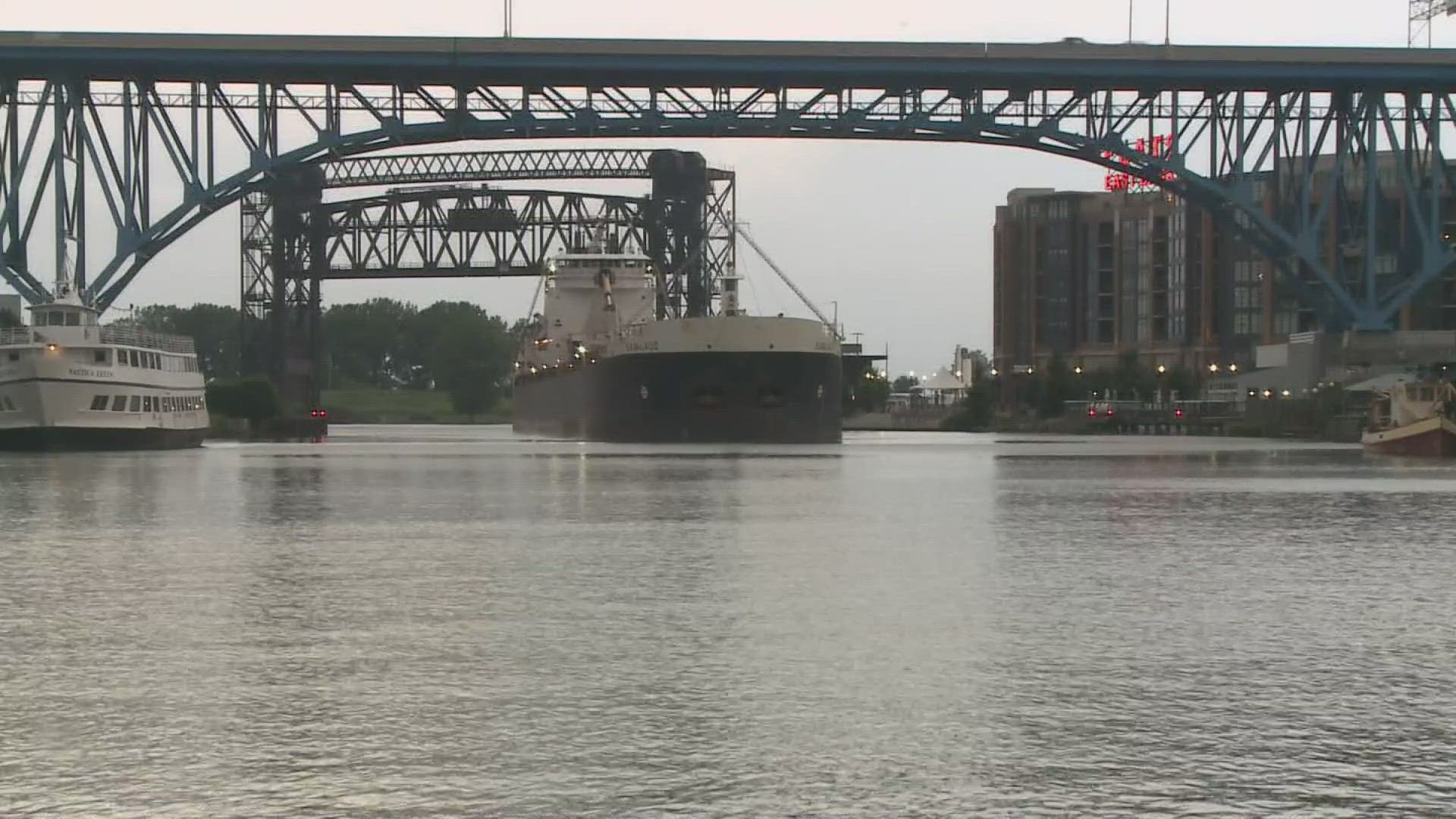CLEVELAND — Shipping safety along the Cuyahoga River is top of mind after a cargo ship lost power and slammed into the Francis Scott Key Bridge in Baltimore.
“It's just an unfortunate tragedy,” says Eric Peace, the vice president for the Lake Carriers’ Association.
The LCP supports ship operators of US vessels on the Great Lakes. He says the mariners they work with are always focused on safety.
“It's not a one-time deal where we're evaluating safety or we're training for emergencies,” Peace says. “We do that on a daily basis. Our mariners are training daily on how to react to a problem or an issue, thinking of the unthinkable and how do you counter that.”
Peace says people in Northeast Ohio should be thankful for The Jones Act, a law that requires materials being moved between U.S. ports to be shipped on a U.S. owned, built, operated, and crewed vessel.
“All our vessels are inspected on an annual basis,” Peace adds. “All of our crew are trained to the highest level of proficiency within the maritime industry and credentialed through the U.S. Coast Guard.”
He says unlike the foreign-owned boat that hit the Baltimore bridge, the vessels navigating the Cuyahoga River are heavily regulated by the U.S. Coast Guard and the American Bureau of Shipping.
“That's really the key here is that because this is U.S. sailors on U.S. vessels, we know we're taking care of and we're safe.”
Peace says local mariners provide service to steel company Cleveland-Cliffs, bringing in large vessels near the Cuyahoga River, then transferring the materials to a smaller ship to navigate the twist and turns of the river. Moveable bridges are required to lift for maritime traffic and operators call 30 minutes ahead to request the lift, according to Peace.
The Port of Cleveland’s President and CEO William Friedman released a statement addressing the question could what happened in Baltimore also happen in Cleveland “where we also have bridges over shipping channels?”
The statement reads in part:
“Our circumstances differ significantly from Baltimore. The Francis Scott Key bridge had a long span over open water with in-water support piers located on either side of the shipping lane. Our network of bridges is different and varied. Several of the bridges over the Cuyahoga ship channel are lift or swing bridges overseen by capable and trained bridge tenders who communicate with vessels to elevate or swing the bridges to let vessels pass. The fixed bridges over the Cuyahoga have no supporting infrastructure in the water adjacent to the shipping channel, making it unlikely they could be compromised by a vessel. Additionally, all vessels that transit the Cuyahoga Ship Cannel are piloted by highly skilled ship masters who know the waterway extremely well and have transited it many times. They also keep vessel speeds low as appropriate in a much more confined navigation channel.”
A representative from the U.S. Coast Guard here in Cleveland says there are no formal size or weight requirements for large vessels navigating the Cuyahoga River near downtown Cleveland. However, “the depth of the water, the channel width, and height of any fixes structures (bridges, transmission lines, etc.) ultimately dictate what vessel can go where.”
Peace says the largest vessel they have on the river is 700 feet long, the size of nearly two football fields.
“You’ve got the best mariners in the world working the Cuyahoga River,” Peace says. “If you’re thankful for anything (be) thankful for those U.S. sailors.”

